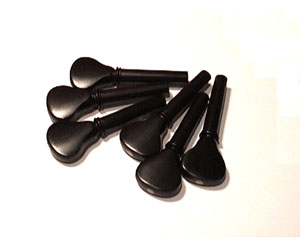Classical Guitar Pegs
Certain mobile phones come with default settings, such as ringtones. A well-known ringtone is the 'Spanish Guitar', which floods the atmosphere with beautiful melody every time the phone rings. In case that you didn't know, the classical guitar is the very same Spanish guitar. It comes with six strings and the modern version was fully developed sometime towards the end of the 19th century. Some people prefer to play the strings with their fingertips, while others choose to use picks – or plectrums. The strings need to be tuned by turning the classical guitar pegs. The pegs usually come with a ratio, which gives you a better idea how many times you need to turn it in order to tighten or loosen the strings.
Classical Instruments Need Fine Tuning!
Before jumping into knowing the guitar pegs field, it's important to get to know the different parts that make up a classical guitar. Even though the classical guitar pegs are what help you tune your instrument finely, there are other parts that are just as important. The following are a few of the parts of a classical guitar:
- Machine head (where the tuning pegs are found)
- Neck
- Bridge
- Body
- Saddle
- Sound hole
- Fretboard
If you are a beginner, it's critical that you become familiar with your instrument. Each and every part of it plays an important role, and if one of them were to break, you need to know where to purchase a replacement. Perhaps the easiest place to look for classical guitar pegs – or any other part – is on the web. Large music stores have their own virtual storefront, such as Guitar Center and Elderly Instruments. In addition, you can opt to bid on sites such as eBay.
Custom Pegs for Tuning and String Position
Playing a classical guitar can be difficult at first. However, just like any other type of musical instrument it takes time to master it. Tuning your guitar is one of the most important skills that you will have to learn. While it's true that you can find assistance in electronic tuners, real musicians learn to tune their classical guitar pegs by ear. While the majority of classical guitar pegs are nickel-plated, you may order custom-made pegs that are gold or chrome-plated. When it comes time to play your instrument, you may sit down and let your guitar rest on your lap.
Getting the Fullest Sound Out of Classical Guitars
At times, even if you replace your classical guitar pegs, there might still be something that doesn't sound right. If you aren't pleased with the notes coming out of your instrument, you can try changing the strings. While some people like to replace the strings one by one, it's suggested to change the entire set every time a replacement is needed. If you enjoy thick trebles, you may want to give white nylon strings a try. Always pay close attention to the tension rating on the new set of strings, which can go from extra-light to extra-hard.

